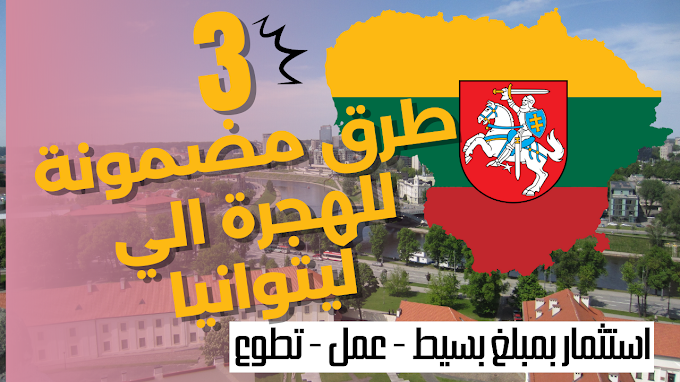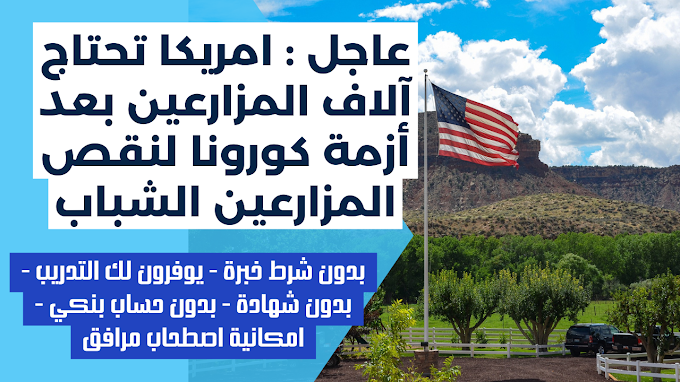10
best places to visit in Kyoto Japan’s ancient capital
1-
in the years since World War II,
Kyoto has changed greatly. The city of one-story traditional houses has seen
modern buildings of extraordinary height rise in its midst. Travelers often
come to Kyoto looking for a traditional Japanese city of low buildings and
architecture of past centuries. Instead, they are amazed by the modern steel,
glass and brick structures they find. Kyoto, as with every other city in the
world, continues to grow and to change, for it cannot remain a museum frozen in
time. Yet there is strong concern in Kyoto about the continuing danger to the
city’s historic nature and architectural heritage. There are ongoing attempts
to preserve the best of the past in its temples and shrines as well as in its
traditional housing. This initial walk therefore takes place in an area which
has been designated as an historic section worthy of preservation, and it ends
at one of the most venerable of Kyoto’s temples, Kiyomizu-dera (Clear
Water Temple). This walk accordingly offers a partial glimpse of the city as it
existed prior to the modernization of Japan in the 20th century.
2- NINEN-ZAKA
AND SANNEN-ZAKA
One could walk
straight up sloping Kiyomizuzaka from the bus stop to the temple, but a
deviation two streets to the north along Higa shi-oji-dori (the main
north–south street) offers a worthwhile diversion. Two streets to the north,
turn to the right on to Kodai Minami Monzen-dori. At the second street on the
right, turn again to the right and climb up the steps to Ninen-zaka (Two Year
Slope) to begin a walk into the past. This offers a picture of the city of
Kyoto as it once was. Fires have destroyed so much of old Kyoto through the
centuries that it is unusual to find an area that still provides the appearance
of a Japanese city before the modern age. Fortunately, Ninen-zaka and
Sannenzaka (Three Year Slope) offer just such a remembrance of times past.
Concerned over the disappearance of the two-story shops and homes which were
typical of Kyoto city life, the city government has created a few “historic
preservation districts” in areas which have remained comparatively unchanged.
One such area encompasses Ninen-zaka and Sannen-zaka.
3- KIYOMIZU-ZAKA
Ninen-zaka
bends gracefully, as a proper traditional Japanese street should, and ends in a
short staircase which leads into Sannenzaka. In turn, Sannen-zaka also ends in
a steeper set of steps which lead up to Kiyomizu-zaka (Clear Water Slope). As
has been the case for the past several centuries, pottery can be found for sale
along both Ninen-zaka and Sannen-zaka, but you will noy encounter the full
panoply of chinaware until you climb the steps at the southern end of
Sannen-zaka and enter Kiyomizu-zaka, which leads uphill from Higashi-oji-dori
to the Kiyomizu-dera Temple at the top of the street. In the last century,
English-speaking visitors nicknamed Kiyomizu-zaka “Teapot Lane,” a name it
still deserves. Here you can find shops which sell Kiyomizu-yaki (Kiyo mizu
pottery) and other chinaware. Souvenir shops line the street cheek by jowl. The
street is always crowded with visitors heading to the temple, many in groups
led by their banner-waving leader. It is always a street full of excitement and
color during the daytime.
4- KIYOMIZU-DERA
Kiyomizu-dera
(Clear Water Temple) is one of the oldest temples in Kyoto, its establishment
even predating the founding of the city. The temple was created in 788, six
years before the Emperor Kammu decided to move his capital to Kyoto. Legend has
it that Enchin, a priest at a temple in Nara, had a vision that he would find a
fountain of pure or clear water (kiyo-mizu) at which he could build a temple. At the
Otawa-no-taki (the Sound of Feathers Waterfall) on the hill
side where the Kiyomizudera now stands, he came upon Gyo-ei, a hermit residing
at the Otawa Waterfall. To Enchin’s surprise, the hermit announced that he had
been awaiting Enchin’s arrival, and now that the priest from Nara had arrived
he could move on to a less settled area. He gave Enchin a log of sacred wood
and instructed him to carve the log into an image of Kannon, the deity of
mercy. With that, the hermit disappeared. Later Enchin found the hermit’s
sandals atop the mountain, leading him to the realization that he had been
speaking with a manifestation of Kannon who had thereafter ascended from the
mountain crest. Enchin carved the image of the 11-headed 1,000-armed Kannon,
and he created a small, crude temple building to house the image— the beginning
of Kiyomizu-dera.
5- NISHI
OTANI CEMETERY
At the foot of the hill at Higashi-oji-dori
to the left lies the entry to the Nishi Otani Cemetery, one of the two oldest
cemeteries in Kyoto. The small double bridge over the waterway has been
nicknamed the “Spectacles Bridge” (Megan-bashi) since the reflection of its
semi-circular arches in the water make for a complete circle and the circles
and the structure of the bridge can be perceived as a pair of eye glasses. A
cemetery may seem to be an unusual place to visit, but this mortuary for the
abbots of the Nishi Hongan-ji Temple and the followers of the Jodo Shinshu sect
of the great priest Shinran offers another aspect of Japanese life.
When Shinran died on November 28, 1262, his
body was cremated, and eventually in 1694 a portion of his remains were moved
from his original burial site to a hexagonal mausoleum at the Nishi Otani
cemetery. (A portion of his ashes were also placed in the Higashi Otani
cemetery of the Higashi Hongan-ji Temple, which is a branch of Shinran’s
faith.)
6- SANJUSANGEN-DO
Of course,
there is little doubt as to where to start this particular walk, since the
Sanjusangen-do Temple with its golden Kannon images will always top any visitor’s list of
places which must be experienced. Sanjusangen-do is on the south side of
Shichijo-dori at Yamato-oji-dori.
7- KYOTO
NATIONAL MUSEUM
Across
Shichijo-dori from Sanjusangen-do is the Kyoto National Museum, and it
is worth a visit since it presents an excellent picture of the arts of Kyoto’s
past. It perhaps is best saved for a rainy day (as with other museums) when one
does not wish to be traipsing between outdoor temples and shrines.
The Kyoto
National Museum was founded in 1875 as an Imperial museum, and in 1897 its
original building was erected in the then current European style that can best
be described as Victorian Neo-Renaissance. The museum was given to the city of
Kyoto in 1924 and then was nationalized in 1952. In 1966, a modern addition
(designed by Keiichi Morita) was opened. Originally planned as a museum for
important items of artistic or historic merit from temples and shrines that the
Meiji government took over, it has developed a substantial collection of its
own—as well as borrowing from private collections and religious institutions
when mounting special exhibitions.
8- HOKO-JI
TEMPLE
The Hoko-ji
Temple is on the east side of Yamato-oji-dori, one and a half streets from
Shichijo-dori, just beyond the Hokoku Jinja (Hokoku Shrine) whose main entrance
faces Shomen-dori, a street heading downhill to the west. The entrance to the
Hokoku Jinja should be bypassed, for the Hoko-ji grounds begin at the end of
the shrine property. Hokoji is open from 9:00 a.m. to 5:00 p.m. There is no
entry fee.
The only
historic remnant in the Hoko-ji, the one-time site of the Great Buddha of
Kyoto, is its infamous temple bell. There is no charge to see it, but if you
wish to strike the bell with its beam, the attendant may collect a small fee
for this privilege. Although the history of the temple is fascinating, other
than seeing the bell it is not worth entering the remaining buildings, which
date from the 1970s after the latest fire to plague the temple. The Hoko-ji
Temple was erected by Toyotomi Hideyoshi in part out of his own vanity and in
part as a ploy to disarm all but the new warrior class (samurai), which officially came into being as a result
of the codification of rank and status that Hideyoshi began and which the
Tokugawa shoguns would formulate definitively after 1600. This “pious” act of
creating the Hoko-ji Temple was hardly based on religious zeal.
9- MIMI-ZUKA
Before leaving
the Hoko-ji, note the Mimi-zuka mound, which was created in front of the Great
Buddha Hall of the Hoko-ji. It reflects the obverse side of the honor given to
Hideyoshi in his own day, for it is illustrative of the cruelty of wars waged
by the warriors of that time as well as of later times. The Mimi-zuka mound is
on Shomen-dori just west of where that street intersects with Yamato-oji-dori
(west of the entrance to the Hokoku Shrine) and immediately to the west of the
children’s playground. Mimi-zuka is a mound in which the ears and noses of
defeated Koreans were buried after the Korean wars of Hideyoshi in 1592 and
1597. The mound originally stood in front of the gateway to the Daibutsuden
(Hall of the Great Buddha) of the Hoko-ji Temple, a hall which has now been
replaced by the Hokoku Shrine in honor of Toyotomi Hideyoshi. The mound is a
tall hill behind a fence and is topped by a very tall sotoba (a five-part memorial stone). In 1592, Toyotomi
Hideyoshi determined that he would conquer China, a part of his dream of ruling
all of East Asia. He sent a massive army into Korea, penetrating to Pyongyang
and the Tumen River to the border of China. Ultimately forced by the Chinese to
retreat to the south of Korea, his war was not a success; it merely resulted in
many casualties on both sides as well as a continuing antagonism with Korea and
China.
10-
HOKOKU SHRINE
The Mimi-zuka
mound reflects the senseless military ardor of Hideyoshi, and today it remains,
ironically, before the Hokoku Shrine, the Shinto memorial to Hideyoshi’s
enshrined spirit. The Hokoku Shrine is on Yamato-ojidori where Shomen-dori
meets Yamato-ojidori, north of the Kyoto National Museum. There is no admission
charge to the shrine. Its Treasury is open from 9:00 a.m. to 5:00 p.m.
The era of peace and a growing economy, after the devastation which had been visited on Kyoto by the century of civil war, endeared Hideyoshi to the public. His festival celebrations, though sometimes brash, also warmed the citizens of Kyoto to his rule. Thus, after his death, one of the popular songs sung by the people at his shrine summarized these feelings.
























0 Comments